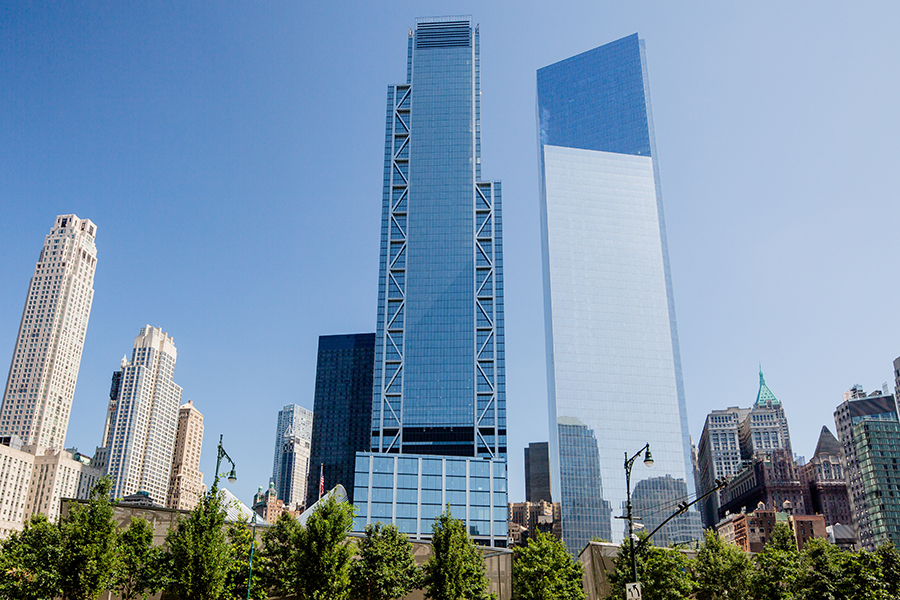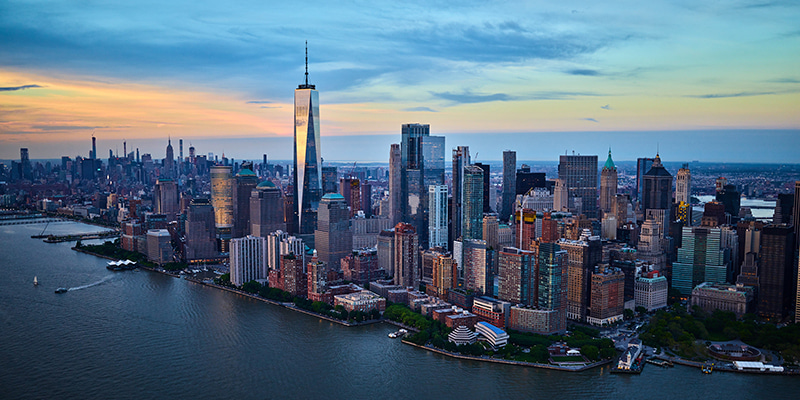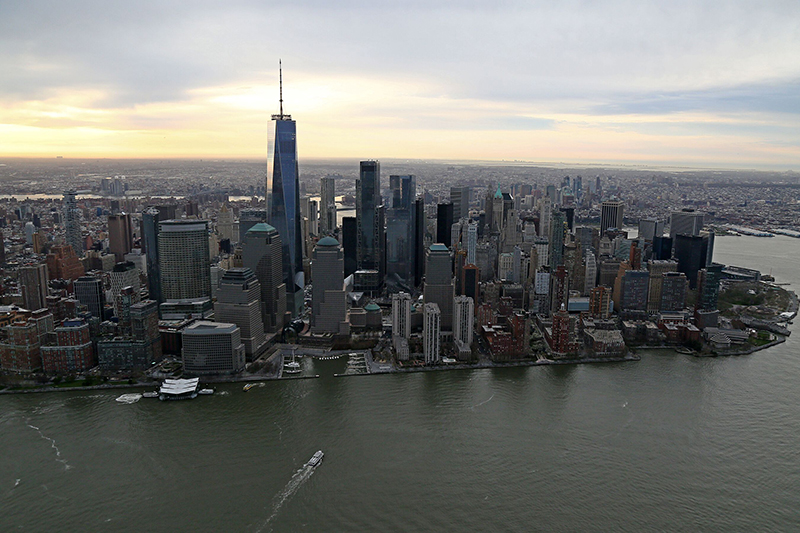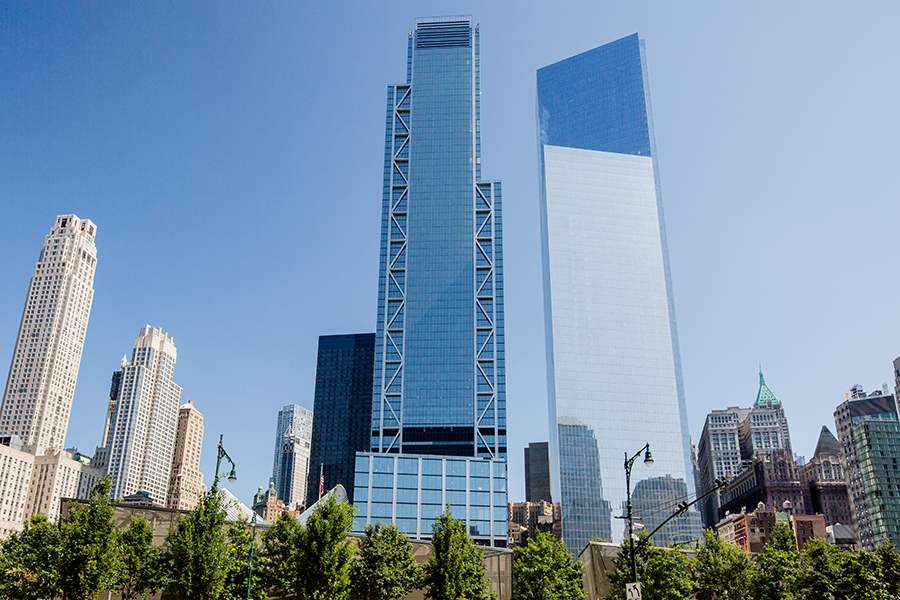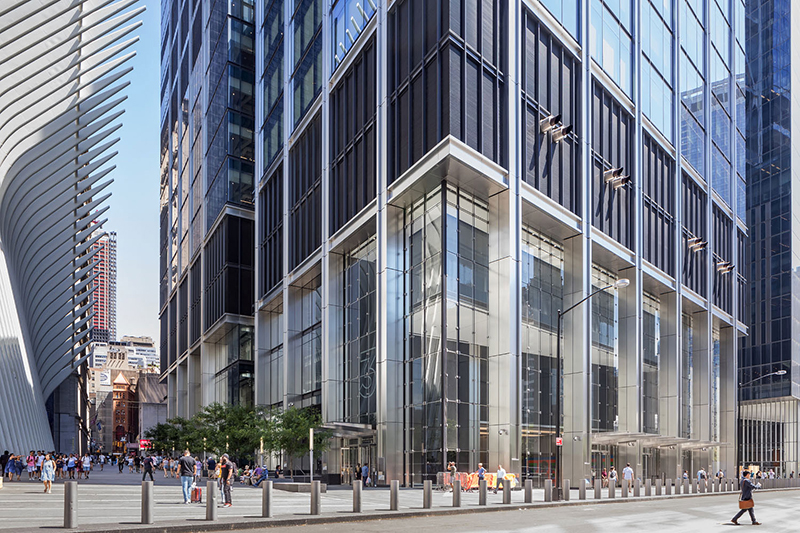By Shawn McCarthy | The Globe and Mail
Devastated by the 9/11 attacks, downtown New York is once again staking its claim as one of the world’s premier business districts based on competitive rents and the old-fashioned value of face-to-face commerce.
Long the capital of U.S. commerce, Lower Manhattan experienced a flight of banks and other businesses from the area after the terrorist attack on the World Trade Center, which left a gaping wound where a cluster of major office towers once stood.
Its position was further weakened by the flowering of the digital age; electronic transactions have largely replaced trading pits and business deals can be concluded by teleconference. Though still an anchor on Wall Street, the New York Stock Exchange – founded in 1792 by 24 merchants who met under a buttonwood tree – is a diminished force, facing tough competition from electronic exchanges.
But businesses are now moving back to Lower Manhattan or recommitting to the area, in part to escape the higher rents of Midtown, which is the U.S.’s largest and most expensive business district. The downtown revival is also a testament to the enduring value of proximity – to competitors, to customers, to suppliers, and to a highly skilled pool of workers from which companies can draw, said Andrew Haughwout, an economist at the Federal Reserve Board of New York.
“New York has a very highly educated, creative group of people who prefer to be near each other because of all the interaction that allows. This attracts businesses who want to access that pool of talent,” Mr. Haughwout said.
Downtown New York – defined as the area south of Chambers Street – was a much-diminished business core after 9/11. The attacks destroyed several buildings in addition to the twin towers, with a total loss of 19 million square feet of prime office space. Since then, developers have converted another 11 million square feet of older commercial space into condos and rental apartments, a movement fuelled by the area’s residential boom.
But it now has a vacancy rate below 10 per cent for prime commercial real estate, and rents are climbing.
One factor driving the move of companies downtown is the progress on construction at the World Trade Center site. One WTC – the 1,776-foot skyscraper formerly known as Freedom Tower – already dominates the skyline. Although it is more than two years from completion, the Port Authority of New York and New Jersey – which owns the building – has signed a number of high-profile tenants.
Silverstein Properties – which owns the other Ground Zero towers – completed 7 WTC several years ago, and expects to finish 4 WTC by the summer of 2013. The developer has already signed major tenants for that building.
The financial sector remains, by far, the largest private sector employer in the area, though professional services companies – like law firms – and technology companies and the tourist trade have increased their share of the employment market in the last decade.
And now media companies are flocking to the downtown, taking advantage of lower rents and the growing sense of vitality, nightlife and diversity that the district offers.
More than 60 media firms are now, or soon will be, headquartered downtown, including Newsweek, The Daily News and American Media Inc., which has a large stable of tabloids and magazines including the National Enquirer and Playboy.
The biggest media move came from Condé Nast Publications Inc., publisher of magazines like The New Yorker, Vogue and Wired. The publisher recently announced it will move from midtown and take one million square feet at 1 WTC.
Downtown landlords, which include a subsidiary of Canadian-based Brookfield Asset Management Inc., have had wins and losses in competition for financial sector tenants. The Japanese bank Nomura Securities Co. Ltd. is leaving Lower Manhattan for midtown, as is Deloitte & Touche, the accounting and consulting firm, which took 12 floors at 30 Rockefeller Center.
But key anchors remain, including the NYSE itself and the New York Mercantile Exchange. Goldman Sachs has built a sprawling new headquarters just north of Ground Zero, financed with some $1.6-billion in tax-exempt Liberty Bonds that Washington provided the city to help post-9/11 reconstruction.
This summer, Oppenheimer & Co. announced it would consolidate its New York operations at 85 Broad St., Goldman’s former headquarters.
Oppenheimer chief executive officer Albert G. Lowenthal said the location offered the requisite space, competitive rents and a ready-made trading floor.
Mr. Lowenthal said many employees would rather be located midtown, closer to where trains from the suburbs of Westchester County and Connecticut arrive at Grand Central Terminal. He added, however, that financial companies benefit from the value of locating in New York, regardless whether it is downtown or midtown.
That value of proximity was clearly a factor in Royal Bank of Canada’s expansion of its office at 3 World Financial Center, across West Street from Ground Zero.
Earlier this year, RBC recommitted to the downtown location by renewing a lease for 112,597 square feet.
In the past decade, RBC has expanded its downtown presence, from 450 people when the planes hit the World Trade Center towers to about 2,700 people today. The company has built one of Wall Street’s largest trading floors, at 72,000 square feet, in its World Financial Center location. Mark Standish, co-chief executive of RBC Capital Markets, said the bank sees its commitment to downtown New York as part of a strategy to maintain visibility in the U.S. market.
“Downtown New York is a nexus of financial institutions and major companies,” Mr. Standish said in an e-mail. “As a global investment bank, we consider it essential to be on the map and have a significant footprint here.”

